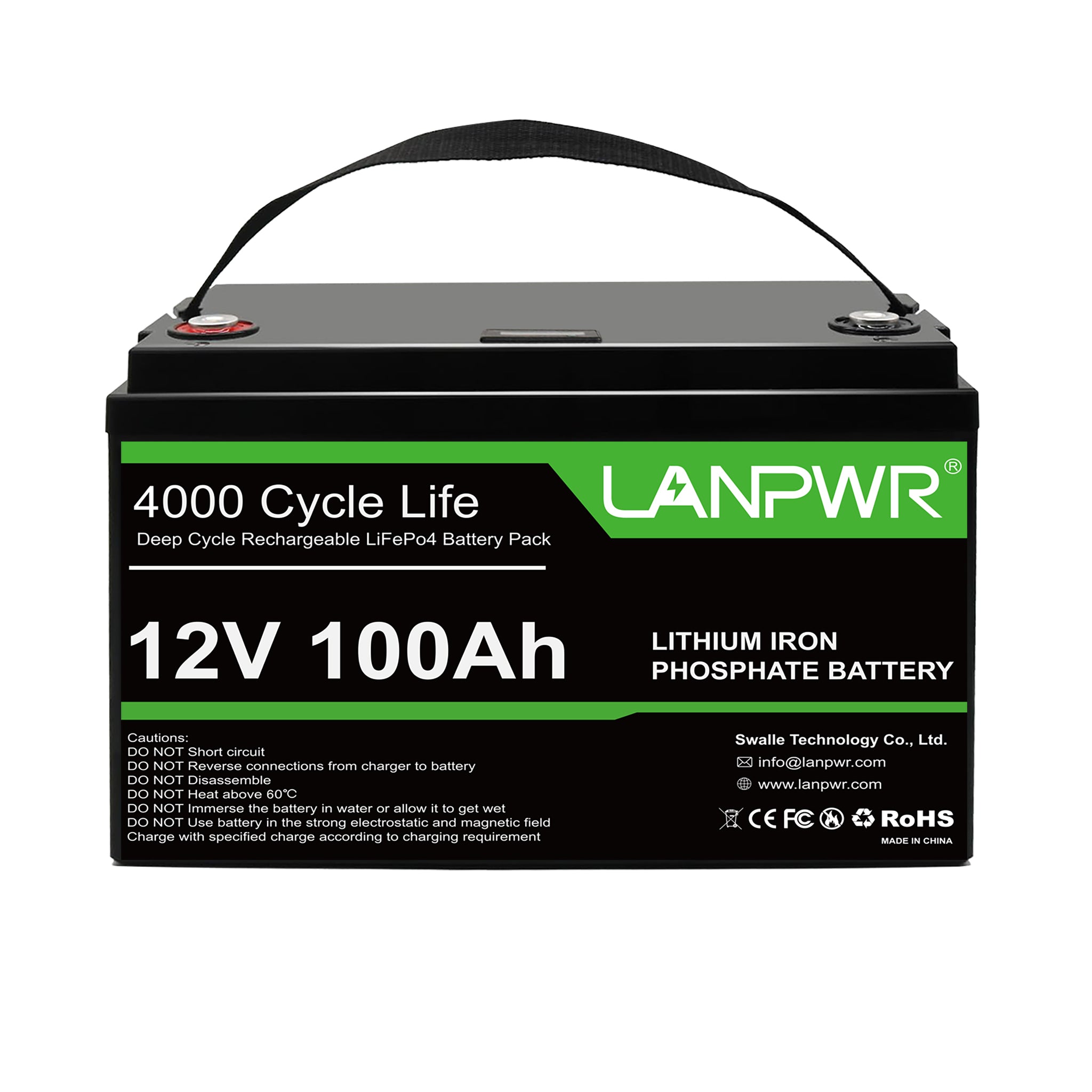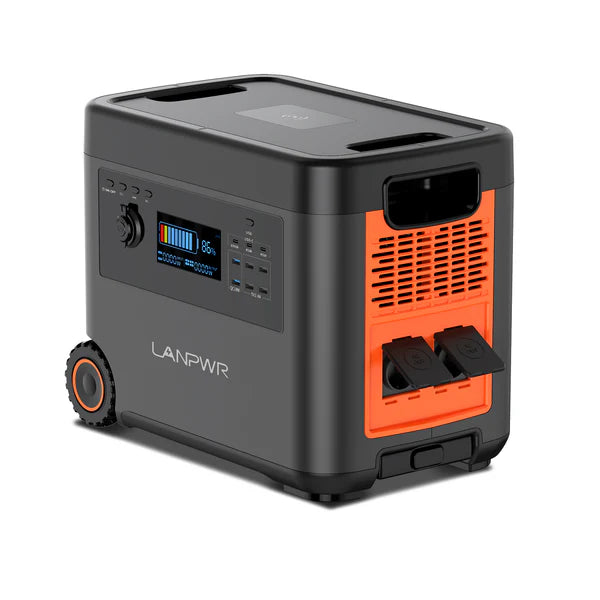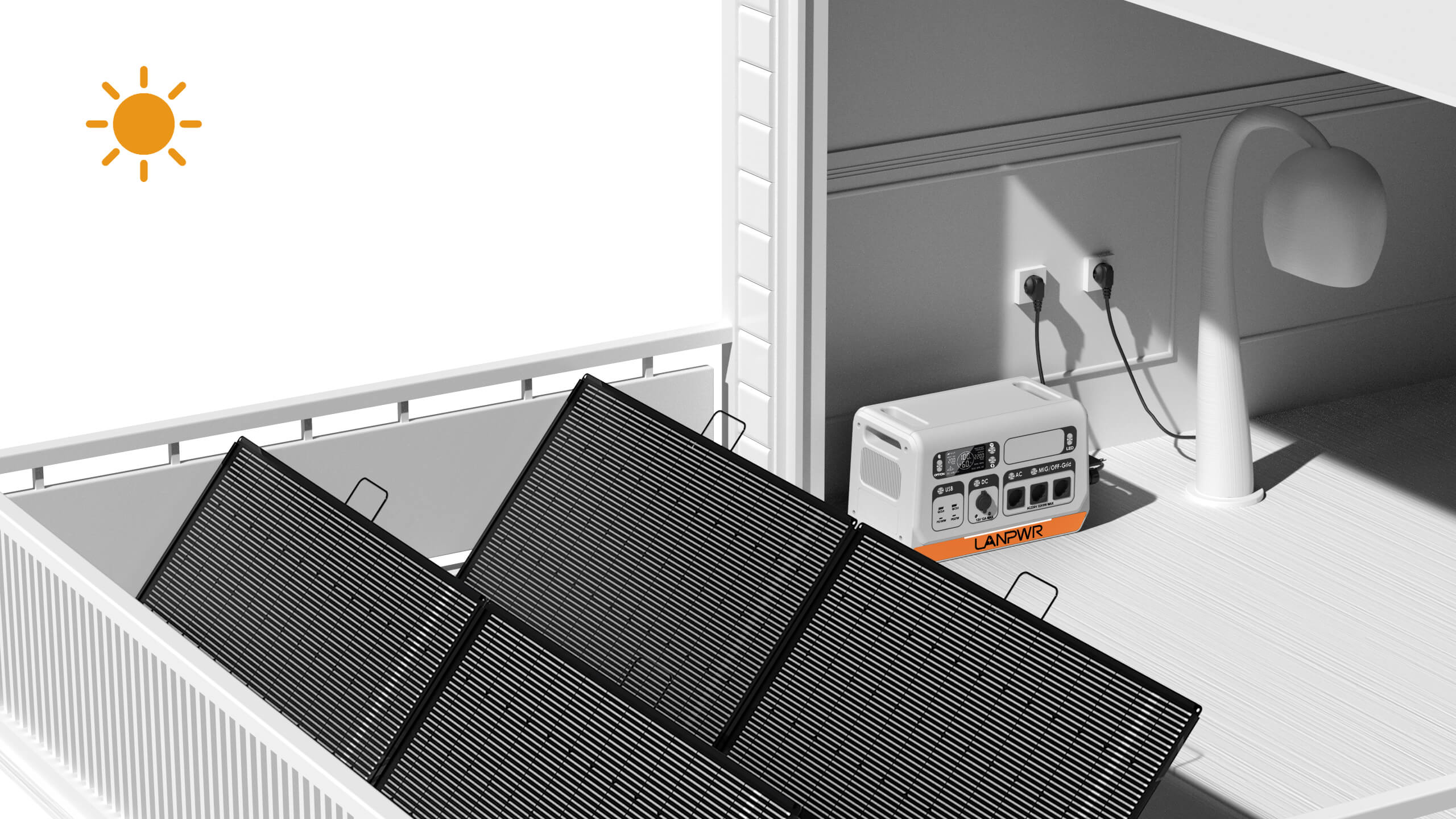Portable power stations are small devices that provide electricity outside of the home. They can save your day while camping, facing a power outage in the dead of winter, or simply when you need some electricity source during an outdoor festive activity. Unfortunately, not all portable power stations are built alike. Many factors, including but not limited to capacity output options charging speed, and build quality all contribute to how well they perform. In this article, we investigate why all portable power stations do not perform alike and how to choose one with some real examples using Lanpwr products.
What are Portable Power Stations?
A portable power station is a huge battery that can store energy and output it through the inverter via different ports like AC outlets, USB, and DC carport. They can be charged at home with a 110v standard wall plug, in the car also you hook it up to their spinner and finally we use solar panels The main function of fat cells is to store energy and then release it when required.
The Performance at a Glance
- Battery Capacity
Have you ever wondered how the battery capacity can decide on a portable power station's performance? Capacity: It usually is expressed in watt hours (Wh) which indicates how much energy the battery can store.
Increased Energy Storage: these power stations can store more energy and therefore can fuel devices for extended periods. As an example, a 1000Wh power station could theoretically yield you around 100 watts of power for every hour overtime to come by giving the quality limit each hour.
So, if you have a power station with far less capacity, say 300Wh available to use at the same load it would drain much quicker.
Example
The greater storage capacity in the 1200Wh model, too just like exchanging a gas tank for an electric vehicle— could be ideal if you intend to long trips or power many devices at once; whereas with its range anxiety equivalent (here likened to a loaded start-up), the trip length appears more suited for short-term use and low-power applications.
- Power Delivery and Output Options
The more varied they are, the higher flexibility is earned to meet various needs as well it often increases the productivity of a portable power station.
AC Outlets - A pretty straightforward outlet, useful for connecting standard AC household appliances and even some larger electronics. Things like how many devices it can power at once, and the types of outlets (it has AC too) are determined by a matter of the number of AC ports available as well as their respective max watt ratings.
USB Ports: A few USB ports (ideally at least one with Power Delivery - or PD) are necessary for fast-charging phones, tablets, and other small electronics.
DC Ports: The carports and some other DC output ports come in handy to power a few devices like a Mini fridge or air compressor in situations where no main electricity is available.
Example
The model includes additional AC outlets, USB-A, and USB-C PD implementation to provide power capitation for a wide array of devices.
- Charging Speed and Methods
The greater the capacity at which a power plant can be recharged, the more critical this is when downtime is simply not an option.
AC Wall Charging: Most power stations are also charged through a standard wall outlet. The charging speed differs from station to station based on their power and the output of your charger.
Solar Charging: Some portable power stations are compatible with solar panel charging as well. This of course is subject to the solar power capacity and efficiency at use by a particular power station.
Car Charging: The sun4wheel can be recharged via a car's 12V outlet, though this will take longer than charging from the wall or solar.
Example
Lanpwr’s solar-ready models are fast charging so you can fully charge from your solar panels in only a few hours- perfect for off-grid applications
- Build Quality and Durability
Whether it will stay with you for longer or fail depends on the build quality of a portable power station and this becomes even more critical when they are taken outdoors to rugged environments.
High-quality materials: the power station would be able to handle physical clashing, weather conditions, and regular use if built with high-level material
Construction: A good power station will have water-resistant casings, shockproof bodies, and sturdy handles for easier portability.
Example
Lanpwr’s power stations are made with tough materials and sturdy construction, creating solid devices that those who love the outdoors can rely on when they need a strong and steady source of energy.
Use Cases and Specific Needs
Based on this the requirements of use cases will change, and different portable power station feature combinations are needed to meet optimal performances.
- Camping/Outdoor Adventures
A portable power station for camping should be lightweight, rugged, and sufficiently high in capacity to run a few key appliances such as lights, fans, or your cooking devices.
Portability: Lightweight and Easy to carry anywhere
Benefits to buying this: Multi-outlet output options that charge up multiple devices at once.
Example
Lanpwr 500 gives you the best of both worlds: enough capacity for a weekend in nature and portability that makes camping better.
- Emergency Power Backup
Reliability & capacity are critical and - in emergencies you want all hands on deck. Powering essential household appliances (refrigerator, medical devices, and communication equipment) at home or even powering a power station.
- High Capacity: Critical devices should run for a long time.
Quick Turnaround: Less than two hours to recharge the power station for next use.
Example
Powered by Lanpwr 1200 model- perfect for emergency preparedness due to its high capacity and rapid recharging when there is a sudden power loss.
- Professional Use
Photographers, filmmakers, event organizers, and several other industry professionals need power - a lot of it as well they need portable power stations that have the juice to keep every piece of equipment up and running.
Max Output: Has the power to spare for large workflow devices such as cameras, lighting rigs, and laptops.
Multipurpose: Various outputs for multiple types of devices.
Example
A great alternative is the Lanpwr 800 Unit with its high power capacity and a range of AC / USB-C PD type ports for professional photographers needing to keep all their kit powered on-location shoots.
Comparing Lanpwr Models
Let us compare some Lanpwr models to see how performance varies.
Lanpwr 300
Capacity: 300Wh
Outputs: 1x AC outlet, 2x USB-A ports, and 1x USB-C PD (type C) + a DC carport.
Charging: AC, solar, car
Ideal: Light to moderate power requirements, ideal for short trips and general-use device charging.
Lanpwr 600
Capacity: 600Wh
The resulting outputs are 2 AC outlets, up to four USB-A ports, max two USB-C PDports, and up to a two-carport DC.
Charging: AC, solar, car
Example: Great for situations where you need an average amount of power, like camping and car trips with several devices.
Lanpwr 1200
Capacity: 1200Wh
Outputs: 4 AC outlets, 6 USB-A ports, 2 x USB-C PD (200W in total), and three DC carports
Charging: Fast AC, solar, car
Case: Good for high needs, bad as a backup power supply and professional use.
Summary
The battery capacity, output options, the speed at which it can, be charged, and build quality are not equal in all portable power stations. When selecting a power station, what must be taken into consideration are the specific points of application. Lanpwr provides different models according to your needs from light duty and up to heavy use. Knowing these differences can be helpful to decide based on your needs and buy the power station that's enough for you. Taking into account metrics such as capacity, output options, charging methods and overall durability will allow you to find a portable power station that can consistently deliver efficient performance suited to your requirements.














Leave a comment
This site is protected by hCaptcha and the hCaptcha Privacy Policy and Terms of Service apply.